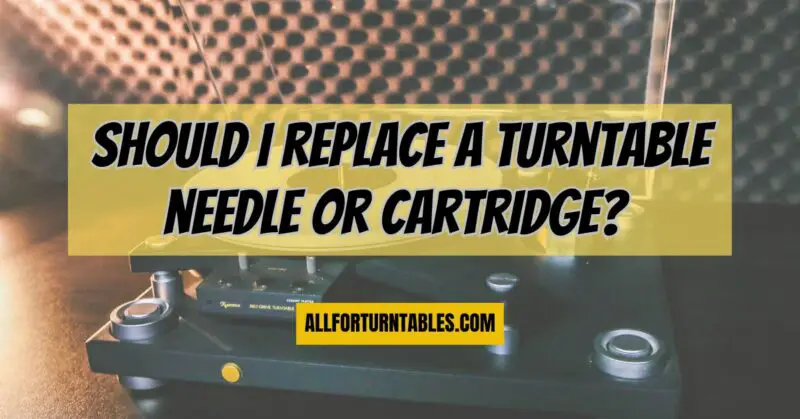As a vinyl enthusiast, one of the inevitable aspects of owning a turntable is maintenance and occasional replacement of components. Among the crucial components are the turntable needle (stylus) and the cartridge, both of which directly affect the sound quality and performance of your vinyl records. In this article, we’ll explore the considerations and factors to help you decide whether you should replace a turntable needle or a cartridge.
Understanding the Roles
1. The Turntable Needle (Stylus)
The turntable needle, often referred to as the stylus, is the tiny, pointed component that makes contact with the grooves of your vinyl records. It’s responsible for reading the audio information in the grooves and translating it into sound. The quality and condition of the stylus have a significant impact on the clarity, detail, and overall sound quality of your records.
2. The Cartridge
The cartridge is the larger component that holds the stylus and houses the phono cartridge’s internal components, including coils and magnets. It serves as the intermediary between the stylus and your amplifier or receiver. The cartridge’s design and build quality can influence the overall tonal characteristics, tracking ability, and output level of your turntable.
Signs of Wear and Tear
1. Stylus Wear
Signs that it may be time to replace the turntable needle (stylus) include:
- Audible distortion or fuzziness in the audio playback.
- Skips, jumps, or repeated playback issues.
- Visible damage or wear on the stylus tip, such as a flattened or chipped needle.
2. Cartridge Issues
Consider replacing the cartridge when you encounter:
- Persistent, uncorrectable tracking and skipping problems.
- A noticeable change in sound quality, such as distortion or a lack of clarity.
- Physical damage to the cartridge body or connections.
- A desire to upgrade or fine-tune your turntable’s sound characteristics.
Budget Considerations
1. Stylus Replacement
Replacing the stylus is generally a more budget-friendly option compared to replacing the entire cartridge. If your cartridge is in good condition and you’re satisfied with its performance, replacing the stylus can rejuvenate your turntable’s sound without a significant financial investment.
2. Cartridge Replacement
Replacing the cartridge can offer more extensive improvements in sound quality, especially if you’re upgrading to a higher-quality cartridge. However, this option tends to be pricier than a stylus replacement. If your cartridge is worn or damaged, or if you seek a substantial sonic upgrade, investing in a new cartridge is worth considering.
The Upgrade Factor
1. Stylus Upgrade
If you’re content with your turntable’s existing cartridge and want to enhance its performance, you can explore stylus upgrades. Upgrading to a higher-quality stylus can result in improved tracking, reduced distortion, and enhanced detail retrieval from your records.
2. Cartridge Upgrade
Upgrading your cartridge can lead to more significant changes in sound quality and overall performance. A high-quality cartridge can reveal nuances in your vinyl collection that were previously hidden. Consider a cartridge upgrade if you’re looking for a substantial leap in audio fidelity.
Conclusion
The decision to replace a turntable needle (stylus) or a cartridge depends on various factors, including the condition of your current components, your budget, and your desired level of audio improvement. Generally, start with replacing the stylus if it shows signs of wear, as it’s a cost-effective way to restore sound quality. However, if you’re seeking a more significant upgrade or your cartridge is compromised, investing in a new cartridge can be a rewarding choice. Ultimately, both components play vital roles in the playback of your vinyl records, and maintaining their quality ensures you continue to enjoy the rich analog sound that vinyl enthusiasts cherish.


